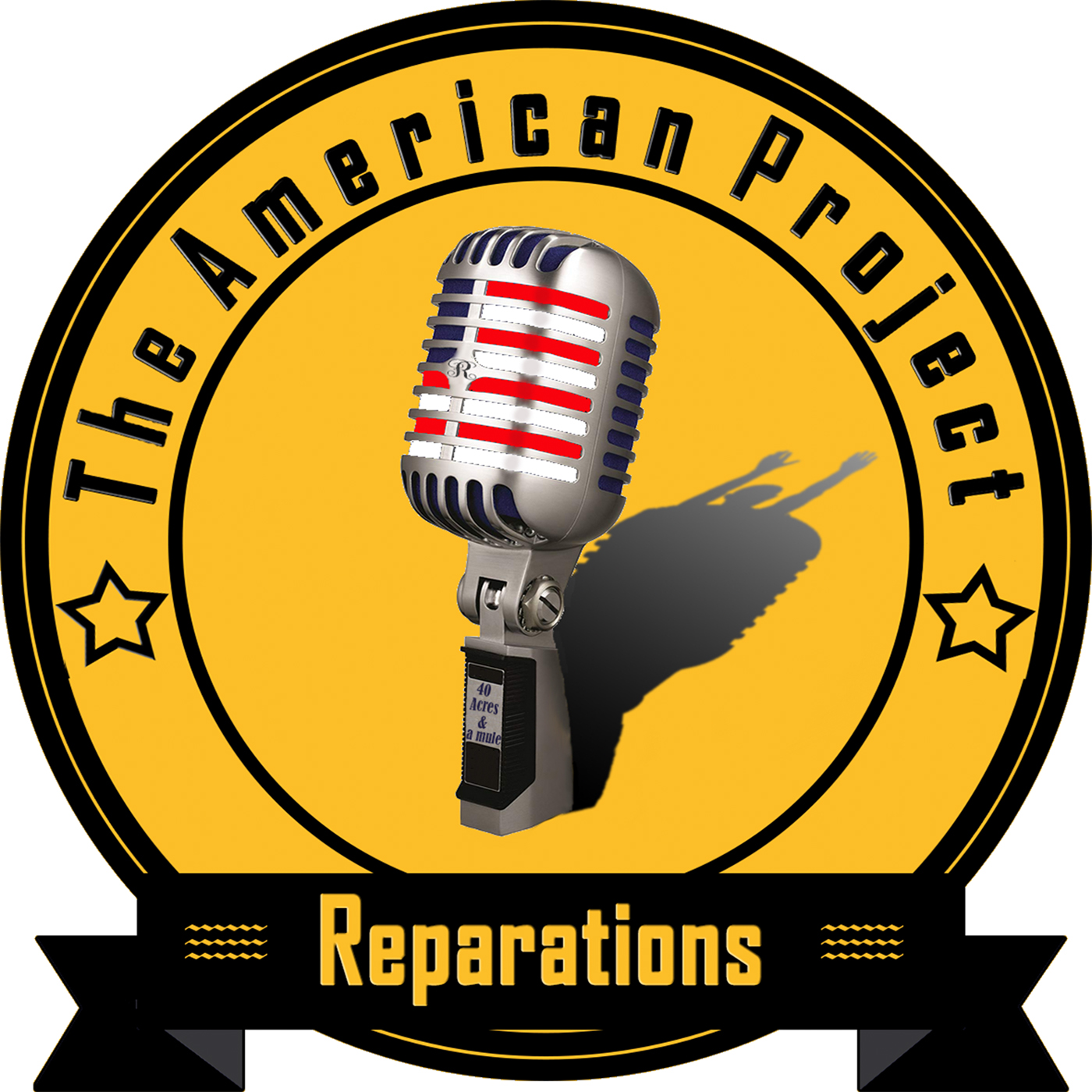
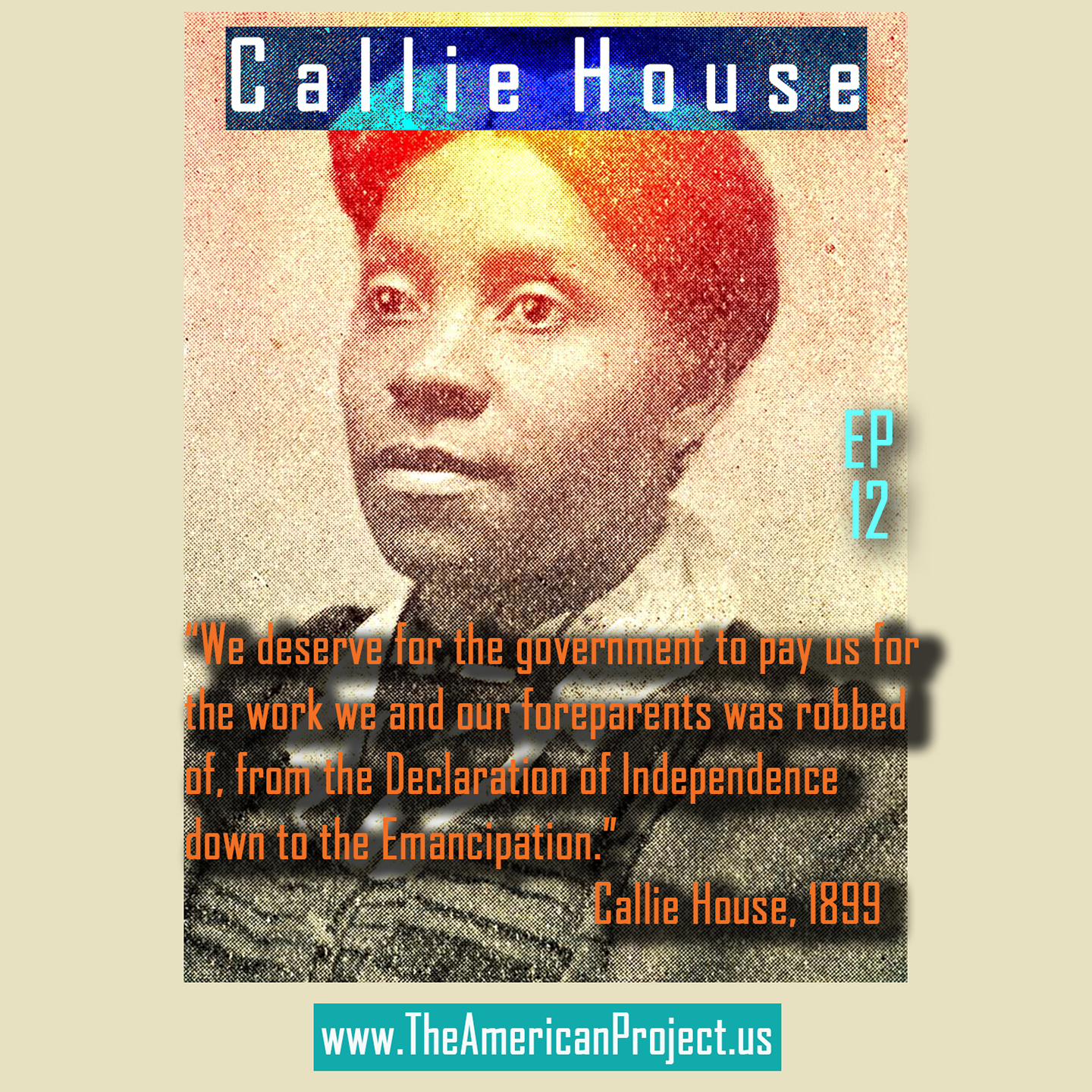 For our final episode of season one, we tell the story of Callie House, formerly enslaved, who founded the largest mass movement for reparations.
For our final episode of season one, we tell the story of Callie House, formerly enslaved, who founded the largest mass movement for reparations.
Transcript
Osha Davidson
Callie House was born into slavery on a farm outside Nashville, Tennessee, in 1861. By her 30s, a group she helped found had become the largest Black political organization in U.S. history, with three hundred thousand paid members, and chapters across the country. House and her organization had one goal: obtaining reparations for slavery.
She wrote, “We deserve for the government to pay us for the work we and our fore-parents was robbed of from the Declaration of Independence down to the Emancipation.”
The National Ex-Slave Mutual Relief, Bounty and Pension Association was the first Black political mass movement and it frightened the US government still committed to protecting White supremacy, even after fighting a civil war.
House’s story is, in many ways, a tragedy. From the government’s failure to honor its promise to emancipated slaves, to its treatment of House herself. She was ultimately imprisoned for daring to exercise her constitutional right to petition Congress.
But House herself isn’t a tragic figure. Callie House is a true American hero.
Historian Tiffany Patterson
Tiffany Patterson
“She’s a magnificent inspiration. She went up against the American government by herself. She had people supporting her, but I think that she was the spark that said, ‘No, you owe us.’ It’s our first reparations movement.
On the final episode of season one: The story of Callie House and how the movement she sparked over a century ago continues to this day.
[Music]
I’m Osha Gray Davidson, producer and host of The American Project, independent reporting on a democracy in the works. We’re recording our last episode on Martin Luther King Day, 2021. That’s fitting for a couple of reasons. First Dr. King is the best known and most revered Reparationist – although King’s demand for reparations as part of economic justice is censored from most discussions of his legacy.
Also, our program began on MLK Day, 2020. Ending it exactly a year later on the day honoring Dr. King has a nice symmetry about it.
There’s no better way to round out this season on reparations than by tracing the story of Callie Guy House, the woman who started it all.
[Music]
Ask any random hundred Americans who Callie House was and you’ll probably get 99 blank stares. The response won’t be much better if you ask only Black Americans. The few people who do know her name probably know it thanks to historian Mary Frances Berry. Dr. Berry’s 2005 biography, “My Face is Black is True: Callie House and the Struggle for Ex-Slave Reparations,” rescued House from obscurity. (We’ll provide a link to the book in the transcript.)
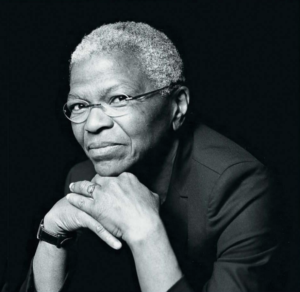
Professor and author, Mary Frances Berry
By the way, if Berry’s name sound familiar, that’s probably because of her long service on the United States Commission on Civil Rights, including nearly decade as chair.)
Here’s Dr. Berry, recorded in 2014 at the Center for New Words in Cambridge MA, speaking on what’s known about House’s origins in Rutherford County, Tennessee.
Mary Frances Berry
She was a woman who was born into slavery, in 1861. Her father…
Osha Davidson
…Thomas Guy…
Mary Frances Berry
…was one of the blacks who were rounded up by the Union Army and was put in the military and he fought in the military. And as far as I can tell, he was killed.
Osha Davidson
After Thomas Guy’s death, the family survived on the money Callie’s mother brought in as a washerwoman and seamstress. Callie likely helped her mother, but unlike her, the young girl possessed something enslaved people in America had been denied. Something they’d craved almost as much as freedom: education. Even a rudimentary one.
For hundreds of years, enslaved Black people were punished with whippings and savage beatings for learning how to read. “Education ruins the slave,” was a common phrase in the slaveholding South.
Callie House got a basic education at one of the primary schools built by the Freedmen’s Bureau during Reconstruction. And the contents of one letter House wrote reveals how critical her access to education was to the Ex-Slave Pension Movement she founded.
Mary Frances Berry
She wrote a letter back, fired a letter back to them…
Osha Davidson
…‘them’ meaning the federal government…
Mary Frances Berry
…said I learned about the constitution when I was in school, and it has something in there about the right petition, petition our government….
Osha Davidson
The constitution of the United States. It guided her life and inspired her almost as much as the Bible. Around the age of 20, Callie Guy met, fell in love, and married William House.
Mary Frances Berry
Her husband was a laborer and they had five children.
Osha Davidson
Her husband died young and Callie House…
Mary Frances Berry
…supported herself and the children by taking in laundry and sewing people’s clothes, just like a mother had done.
Osha Davidson
In church one day, a friend shared with her something that would change her life: a small book with the long title: “A Plea for American Freemen and a rational proposition to grant pensions to persons of color emancipated from slavery.”
The preface laid out its goal.
Walter Vaughn
Be just to the blacks of the days of slavery. Their recognition as citizens, worthy of compensation for past errors of the Government, will do more to elevate the fame of a great nation that dares to be just, even at a late hour, than all the story of its brilliant achievements in arms. The glory of American freedom will be made perfect in the pension of the surviving slaves of the ante-bellum period. W. R. VAUGHAN. Omaha, Neb., October 1, 1890.
Osha Davidson
A noble sentiment, particularly coming from a White man born in Selma, Alabama. But Walter R. Vaughn was actually running a scam. He didn’t care about the plight of the 2 million ex-slaves, a majority of whom were aging and impoverished.
Mary Frances Berry
The South was an economic disaster basket case. And that if he could figure out how to get some money into the pockets of the ex-slaves, they would spend it on the plantation and the masters would get it. This was an indirect way to get them some money.
Osha Davidson
Vaughn was also making money selling his booklets to Black people for a dollar apiece. Vaughn’s motives aside, Callie House thought government pensions for ex-slaves was a brilliant idea. As she later wrote:
[Recording]
“We deserve for the government to pay us for the work we and our fore-parents was robbed of from the Declaration of Independence down to the Emancipation.”
Osha Davidson
House was all-to-familiar with just how much ex-slaves needed the money, especially the growing percentage of them who were elderly. Those who were just 30 years old when Abraham Lincoln issued the Emancipation Proclamation were now into their 60s.
While combing through archives, Dr. Berry discovered a trove of old documents and letters.
Mary Frances Berry
And the things that are in these letters make you cry. There was this woman, 101 years old, and she was still working. Because she didn’t have money. She was working. And Creasy Mac who was 89 years old, still worked in the same house that she had worked in, she’d worked for this owner as a slave.
Osha Davidson
House knew how much the many sick and old former slaves needed those pensions. Vaughn’s book lit a fire within her.
Mary Frances Berry
She said the idea sounds good. But why do we need him? She said, Well, I’m going to start something.
Osha Davidson
And she did. House turned to Isaiah Dickerson, a local Black teacher and minister who had once worked for Vaughan. She had a million questions.
Dr. Mary Francis Berry.
Mary Frances Berry
How do you get a congressman to introduce something? And what do people do? How did they do this?
Osha Davidson
In addition to her boundless energy and unflinching determination, House brought another skill to the fight for pensions: she had some serious tactical chops.
The Ex-Slave Association she and Dickerson founded in 1898 wouldn’t limit itself to the battle for pensions. It would also serve as a mutual aid society with dues-paying local chapters. That arrangement had a dual purpose. Dr. Berry explains House’s thinking…
Mary Frances Berry
The hardest thing is going to be trying to keep us together. So what we’re going to do is we’re going to take our few little pennies and put them together. And when somebody’s sick, we’re gonna get them a doctor, if they need it, I’ll take care of them. If somebody dies, we’re going to bury them. And That’ll keep us together.
Osha Davidson
In addition to providing much-needed short-term aid, House knew that organizing chapters with regular meetings would attract members and create the cohesiveness needed for the long haul. But even House was be stunned by how quickly the organization spread.
Mary Frances Berry
It just grew like wildfire. People signed up for the thing and paid their five cents dues. If they didn’t have five cents, they paid a penny or whatever they had or promised to pay it at a later time.
Osha Davidson
House began non-stop travel throughout the South setting up new chapters. Soon she moved her family to Nashville, to be closer to a major railroad station.
Tiffany Patterson
And before you know it, she had over 34,000 Members.
Osha Davidson
That’s Vanderbilt University Associate Professor of History, Tiffany Patterson. Within a few years, says Professor Patterson…
Tiffany Patterson
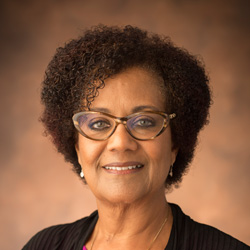
Dr. Tiffany Patterson
It had grown to somewhere in that neighborhood of 300,000. It’s our first reparations movement.
Osha Davidson
The Ex-Slave Association was the first and later with between 300 and 600,000 members, the largest poor people’s movement in the United States. Prof. Patterson calls House…
Tiffany Patterson
… an unexpected leader. Many were looking to the educated elite, to be in the leadership, those who had had the privilege of education, teachers, lawyers, ministers, churches, etc., etc. She’s not any of that. She was a racial outlaw. How dare her? She wasn’t like Booker T. Washington…He had his own approach, a quieter approach. But hers was direct action. And so she was a threat.
Osha Davidson
And not just a threat to Black elite leaders. The federal government saw House and her organization as a grave danger to the established order. In other words: to White supremacy. Again, Mary Francis Berry.
Mary Frances Berry
Malcolm X used to say that if a whole lot of Black people get together and start doing something, and white people don’t know what they’re doing, they get scared.
Osha Davidson
Federal agent infiltrated the group’s meetings to find out what was going on. But the spies reported that they didn’t see evidence of any crimes.
Mary Frances Berry
So that disturbed the bosses. The bosses said, look, you’ve got to find something that they do. Because this is dangerous. There are at least 300,000 people who’ve signed up to this thing. That’s a lot of people. So They said, How can we stop them?
Osha Davidson
And the answer they came up with was…
Mary Frances Berry
…they engaged in fraud. They’re trying to get the government to do something that they know the government’s not going to do. And that’s fraud.
Osha Davidson
The Postmaster general, in concert with the Attorney General’s office, and the Pension Bureau sent House a letter stating that if the EX-Slave Association continued its fraud, the group would be banned from using the US postal service. House was baffled and angry. She sent a letter back…
Mary Frances Berry
…and it started out with, “Have you read the Constitution?”
Osha Davidson
She quoted the first Amendment that guarantees the right of the people “to petition the Government for a redress of grievances.”
Mary Frances Berry
And she told him off in every way possible, and said, all we trying to do is get ourselves together. And y’all freed us. And now the man who has the right to work us to death has the right to starve us to death. And so what is wrong with that and why are you bothering us?
Osha Davidson
Government officials were enraged that a former slave, a woman, was quoting the Constitution back at them. They wrote each other…
Mary Frances Berry
This woman is defiant. The she thinks Negros can do whatever they wish to do.
Osha Davidson
The government decreed that the Ex-slave Association could no longer send or receive any mail. Today, it may be hard to imagine, what a devastating blow that was at the time for a movement of mostly poor people. Of course text messaging or email were still nearly a century off, but even telephone service was still rare and only the wealthy could afford to send telegraph messages regularly.
The ban included Callie House, Isaiah Dickerson and all the Association chapters. Some local White postmasters throughout the United States went even further.
Mary Frances Berry
One in particular said that any mail that was for any a black person in the community, he just wouldn’t give it to him. Because he figured it might have something inside about this organization.
Osha Davidson
But House…
Mary Frances Berry
…said, I’m not giving up. These chapters are running. I need to go around to see people. They had agents all over the country, they had chapter heads. They had them not just in the south, Kansas, Oklahoma, he had Massachusetts, they had him everywhere. Anyway, there was no black person, there was a chapter in New York City everywhere. And she said, I’ll just travel more.
Osha Davidson
And she did. House spent more time on trains than she did with her family. The group also became more strategic, hiring a Black DC. lawyer to get pension bills introduced in Congress.
Mary Frances Berry
The lawyer got five bills introduced into Congress to give the pensions, $12 a month if you’re over 80, $4, if you under 50.
Osha Davidson
But the bills all died in committee. By 1912, House decided to try a different tack. She’d take the government to court. House had discovered that during the Civil War the Federal government had collected $68 million dollars in taxes from the sale of cotton confiscated by the Union forces from Southern plantation owners.
Mary Frances Berry
Why don’t we ask for that money?
Osha Davidson
…reasoned House.
Mary Frances Berry
Because we picked the cotton. And so we ought to tell them to give us that money.
Osha Davidson
House hired Cornelius Jones, one of just two Black lawyers who routinely argued cases before the United States Supreme Court. Jones filed a class action suit against the U.S. Treasury on behalf of the ex-slaves whose labor produced the cotton. The DC Court of Appeals ruled against Jones, who appealed the case the Supreme Court. The justices upheld the earlier decision.
Mary Frances Berry
And then when they lost the case, the same people in the pension Bureau and the post office department tried to put him in jail Cornelius Jones for being willing to be their lawyer to bring the suit and said he was engaged in fraud, because he was encouraging them to believe that there was some way for the government to do something.
Osha Davidson
But Jones was a well-respected lawyer. White lawyers and even judges came to his defense. Jones was untouchable.
Mary Frances Berry
But Callie House was a nobody.
Osha Davidson
She was a poor, Black, woman, a washerwoman with only a primary school education. The fact that she also founded and lead a nationwide mass-movement of more than 300,000 people, only made her more of a target to the government. House reached out for help from Black leaders.
Mary Frances Berry
The black middle-class leaders didn’t come to her defense, ever, she tried to get them to help. They said, Why are you doing this? This is a distraction. We need to be working on voting rights and on education bills that they were trying to get through the Congress.
Osha Davidson
In 1917, House was charged with criminal mail fraud, a federal crime. An all-White jury found her guilty. Outside the courthouse in Nashville, Black supporters wept openly at the news.
Mary Frances Berry
And she went to jail in Jefferson City, Missouri. They sent women to prisons in the States, then there was no federal women’s prison. And she served her time a little over a year in that prison.
Osha Davidson
After her release, House returned to Nashville. Some chapters had survived, but after being branded a fraudulent organization by the United States government, the Ex-Slave Association membership plateaued and then shrank. House didn’t fare any better.
Mary Frances Berry
She lived in a poor, that’s a neighborhood where I lived at as a baby, shotgun house, she never had any money. The government claims she was making money or something she never had any her children never had any. They were all laborers and working-class types. And she got uterine cancer and she died.
[Music]
Osha Davidson
But the movement she created didn’t die with Callie House, as the federal government had hoped.
Mary Frances Berry
And the legacy though, is her movement, the agents in her movement, the chapters went into the Garvey movement. When Marcus Garvey came to the States, the same people, the same names of people in these little towns and all around who were in her movement, became Garveyites.
Osha Davidson
Born in Jamaica, Marcus Garvey considered Africa the true home of all Black people who had been enslaved or descended from slaves, in whatever country. Many of Callie House’s followers found a natural home in Garvey’s organization: The Universal Negro Improvement Association, known as the UNIA.
Marcus Garvey
Fellow citizens of Africa, it is for me to inform you that the Universal Negro Improvement Association is an organization that seeks to unite into one solid body, the 400 million Negroes of the world. As you are aware, the world…
Osha Davidson
That’s Garvey, speaking in 1921. His Pan-African movement included reparations primarily to support a “Back to Africa” movement.
Mary Frances Berry
And in the New Orleans chapter, there was a remarkable woman in the Garvey movement, whose name was Audley Moore. And Audley Moore, later call Queen Mother Moore, became the heart and soul of the reparations movement after that time.
Osha Davidson
Here’s Moore interviewed in 1985.
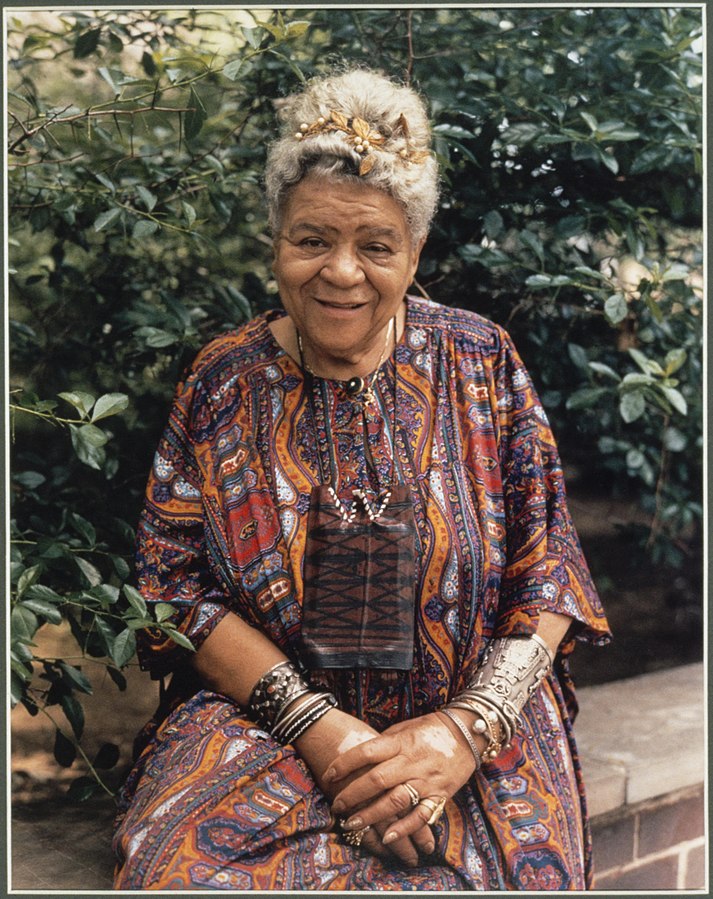
Queen Mother Audley Moore
Speaker 1
I understand that you sent a petition to the United Nations and think 1957. For reparations of for the, for the black people in America. Explain something about that.
Queen Mother Audley Moore
Yes to petition call for us to go back to Africa. For those who want to go back. And for those who were to stay here they had to be a certain indemnity given for the people who wanted to stay the people who wanted to go,
Speaker 1
What kind of indemnity?
Queen Mother Audley Moore
Well, I was asking for $200 billion.
Speaker 1
Billion dollars to indemnify…
Queen Mother Audley Moore
Yes, for the injury that we have received the injury as a result of our enslavement.
Osha Davidson
Louisiana was home to 80 Garveyite chapters, more than any other state. Audley Moore’s chapter in New Orleans was a vibrant hub that included members of the Ex-Slave Association. Given the overlap between the two groups, Moore would have seen her work as a continuation of House’s campaign.
After the government convicted Garvey, like House, of mail fraud, and deported him to Jamaica in 1927, Moore continued pressing for reparations and inspired others to do so, right up until her death in 1997.
Nkechi Taifa
My name is Nkechi Taifa and I’m a founding member of the National Coalition of Blacks for Reparations in America.
Taifa is one of those people Moore brought to the reparations battle. Founded in 1987, N’COBRA is the modern coalition perhaps most associated with Moore. Like Garvey’s UNIA, N’COBRA has deep roots in the Black Nationalist and Pan-African movement, an identity that Nkechi Taifa also embraces. I interviewed her in late 2019.
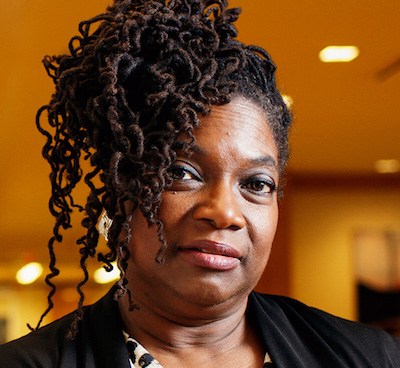
Nkechi Taifa
Nkechi Taifa
I’m a descendant of an African person who was enslaved in the United States. And I think that distinction is really a key. [more under]
Taifa’s friendship with Moore began long before N’COBRA, but she also credits other antecedents for her work.
Osha Davidson
I want to talk a little bit more about the history of reparations.
Nkechi Taifa
We’re talking about Mrs. Callie House and the Reverend Isaiah Dickerson. They headed the very first mass based reparations movement in the United States, it was called the Ex-slave Bounty and Pension Association. It had several hundred thousand dues paying members, and it was really, really massive.
Osha Davidson
Callie House’s legacy made its way north during the Great Migration, when six million Black Americans left the South searching for a better life in northern cities. In 1939, one of the men who made the journey north to work in a Detroit auto factory told a union activist about Callie House’s plan. That union leader was Christopher Alston.
Christopher Alston
When the war when the civil war ended they threw us out in the streets with communities with nothing. Our families weren’t even together because. One family was one place one another place. The genius of our black women was that they remembered where this person went and where that person went and formulated and put together a whole race a nation of people in less than 20 years.
Osha Davidson
For five decades Alston had been researching Callie House’s reparation’s claims and lobbying to make them a reality when this was recorded in 1990 for the local TV program, Detroit Black Journal. Now, nearing the end of his life, Alston’s work was to take the torch Callie House had lit and pass it to a new generation.
Christopher Alston
My role in this whole thing is to see if I can give Mr. Jenkins and others like him, younger men, the necessarily legal and moral and historical backup of what they’re doing. I admire Mr. Jenkins very much.
Osha Davidson
He’s talking about Ray Jenkins, a key figure in this story, a Detroit businessman, who appeared with his mentor Chris Alston on Detroit Black Journal.
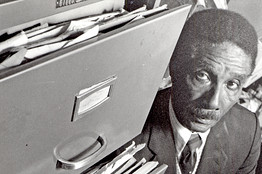
“Reparations Ray” Jenkins
Ray Jenkins
My grandfather was a slave in Mississippi. And his daughter sits right here right now eighty-nine years old and she quite concerned about the 40 acres a mule that the black people did not receive.
Osha Davidson
Jenkins was born in Tennessee, not far from where Callie House lived, in 1930, two years after her death. He was put to work on a cotton plantation when he was 8 years old. He once told a reporter: “I never forgot how we were exploited by White people.”
After moving to Detroit, Jenkins played a crucial role in bringing reparations into the modern era.
To learn about his significance I turned to a towering presence in the Motown’s history…
Rev JoAnn Watson
Wake up Detroit! I’m Joanne Watson. This is the day the Lord has made we rejoice hallelujah. And we’re glad in it. We praise God for…
Osha Davidson
In addition to her radio, and then TV program, Wake Up, Detroit! Watson has a long list of accomplishments.
Rev JoAnn Watson
I’m a former city council member, former executive of the Detroit NAACP and a former director of racial justice for the National YWCA of the USA.
Osha Davidson
Watson is also longtime reparations activist, brought to the task by none other than Ray Jenkins.
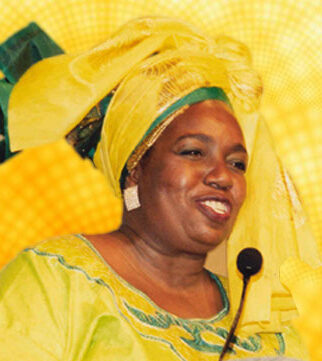
The Reverend JoAnn Watson
Rev. JoAnn Watson
Every day I was waking people up, going morning drive time saying, “Wake up, Detroit.” And one of my first callers was always Ray Jenkins. He was steadfast in his number one issue, reparations. Every public meeting he went to, every time he came on radio or TV, and even in private conversations reparations was his issue.
Osha Davidson
So, Watson started calling him “Reparations Ray,” a nickname that stuck. The Wall Street Journal even used it in the headline of his 2009 obituary.
Rev. JoAnn Watson
Nobody represented the reparations movement stronger and longer than Reparations Ray Jenkins.
Osha Davidson
During her work for reparations, Watson discovered that her own family had a direct connection to Callie House.
Rev. JoAnn Watson
I learned that my great grandmother’s eldest brother, whose name was Sanders White was a supporter of Callie House. And when he began to support her, they put him in Parchman Prison in Mississippi. And that’s when he became emaciated and ultimately lost his life there in that prison. Just because he supported Callie House’s movement.
Osha Davidson
Watson’s personal connection to Callie House may sound like an amazing coincidence, but it’s really not so surprising. Remember, House’s movement was crushed because it was so widespread. The government figure of 300,000 known members could have easily have too low – some estimates range up to well over half a million dues-paying members. A hundred years later, many descendants of those formerly enslaved in the US have a family member with a similar connection to House.
Among those harangued by Reparations Ray in the 1960s, was a young Congressman representing Detroit.
John Conyers
We’ve got to recognize this color problem in America is as significant, and even more so than it was in the Civil War than it was. And we’re in the Revolutionary War, when the question of whether this country would be conceived, all free or with slaves and free men, and that it’s built up. This is the accumulation of it.
Osha Davidson
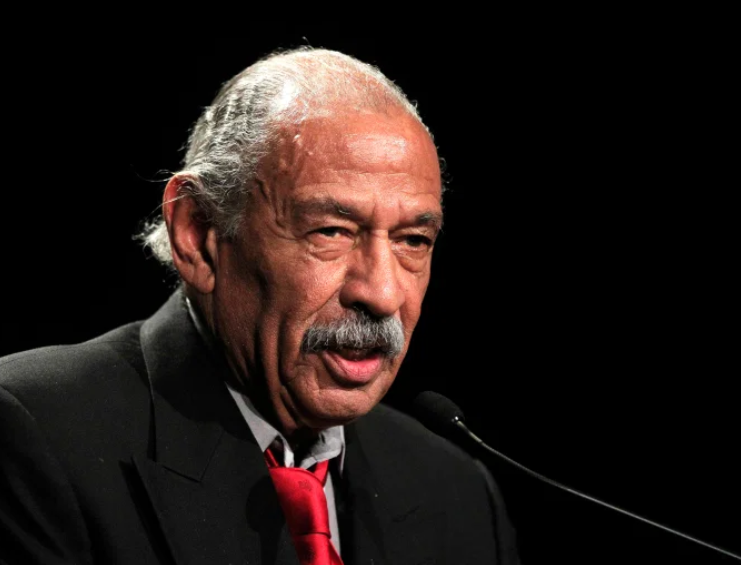
Representative John Conyers, Jr.
That’s then-2nd term Congressman, John Conyers, Jr., speaking in 1967, while the Detroit riots were still underway. Reparations Ray set about recruiting the young Congressman to the cause. But Conyers was a reluctant convert. Recalling their relationship in 2009, Conyers told a reporter: “I’d see Reparations Ray in the distance, and I’d say, ‘Uh-oh.’”
Rev. JoAnn Watson
Rev. JoAnn Watson
Reparations Ray, not once, not twice, but over and over again, he demanded that his good friend, Congressman john Conyers, sponsor legislation for Reparations. Reparations Ray told Congressman, “Our people what it’s like kidnapped at gunpoint and enslaved 246 years. We are due reparations Congressman, and you got introduced that deal.”
Osha Davidson
Eventually Conyers did take up the cause and in 1989…
Ray Jenkins
On the 20th of November, Congressman Conyers introduced this bill and it’s going to study it it’s more of a study. That’s the first portion of it. They’re going to stay there for, well, I hope for a very short time.
Osha Davidson
But the bill stayed in legislative purgatory, for a very, very long time. Conyers introduced the reparations bill every session for the next 18 years. His bill was HR40, a reference to the 40 acres promised to former slaves, and distributed to 40,000 of them, until being yanked back President Andrew Johnson following Lincoln’s assassination.
[Clip of discussion and gavel.]
HR 40 got its first hearing in 2007.
Osha Davidson
But again the bill died in committee. In 2014, a frustrated Nkechi Taifa told journalist Ta-Nehisi Coates.
Nkechi Taifa
People who talk about reparations are considered left lunatics. But all we’re talking about is studying reparations. As John Conyers has said, we study everything. We study the water, the air, why can’t we even study this issue? This bill does not authorize one red cent to anyone.
Osha Davidson
Conyers continued introducing it every session until resigning from Congress in 2017. He died in 2019, at the age of 90. Conyers was gone, but the push for reparations that began with Callie House more than a century before him, continued. And on June 19th, 2019….
[Clip of 2019 hearing.]
Osha Davidson
This is where I first began reporting on reparations, covering these hearings for the NAACP’s magazine, The Crisis. The revised version of HR 40, which now called explicitly for compensation for slavery, had a new standard bearer.
Andrea Mitchell
Democratic Congresswoman Sheila Jackson Lee has spearheaded the legislative efforts to establish a reparations commission and joins me now Congresswoman, thank you very much.
Shelia Jackson Lee
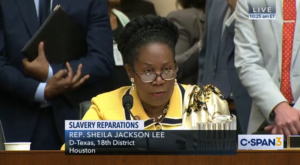
Texas Rep. Sheila Jackson Lee
Well, it’s so good to be with you. Let me indicate what a moment in history we have, in the midst of white supremacy, white nationalism, and what I said a few weeks ago that racism is a national security threat.
Osha Davidson
Even in Callie House’s time other groups called for reparations. They were much smaller than House’s Ex-Slave Association, but they believed just as passionately in the necessity for reparations and its justness.
Today, no one group dominates the reparation’s landscape as Callie House’s did. N’COBRA’s coalition is still very much in the fight. But the advent of internet platforms and social media has allowed other voices to emerge.
Today, the most prominent of these is the movement known as American DOS, or simply ADOS, for American Descendants of Slavery.
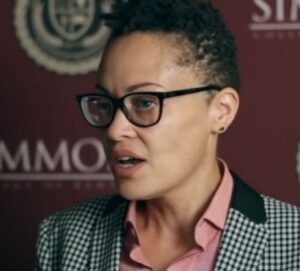
Yvette Carnell
That’s Yvette Carnell last year, emphasizing the role of lineage in reparations, while talking about now Vice President Kamala Harris. Carnell, a former aide to two Democratic members of Congress co-founded ADOS along with this man, Antonio Moore, a lawyer, and an Emmy-nominated documentary film producer.
Antonio Moore
ADOS has done a wonderful job of keeping it focused on politics. And that’s what we’re gonna do today as we talk about Trump. So this is Antonio Moore coming to you from Tone Talks I’m going to be talking about the end of Trump’s presidency, he came in with a bang is ending with the flame fizzling out, so we’re gonna talk about it today. I stand by the same position I stood at the beginning, which is Trump was going to be awful president of the president for America, particularly for black folks. Let’s talk about it. Let’s get into it.
Osha Davidson
Both of those clips are from YouTube, where Carnell’s program, Breaking Brown and Moore’s, Tone Talks, each have around 30,000 subscribers.
I contacted both, but neither responded to my request for an interview.
[Music]
Between the social media discussions about reparations, the support from groups ranging from cities to religious organizations, the call for reparations has never been greater. And that leaves supporters hopeful.
Here’s William Darity, co-author of the award-winning book, From Here to Equality: Reparation for Black Americans in the 21st Century.
Osha Davidson
How optimistic are you that an effective reparations program will be adopted?
William Darity

Prof. William Darity, Jr.
Well, so it’s 150 years and counting. And so, given that, it’s, it’s been that long a period of time and the demand is so, so just and valid. You know, I guess I don’t want to have an expectation that this will necessarily happen in the next few years or perhaps even within my own lifetime. But I don’t think the demand is going to is going to vanish because it’s completely valid.
So let me let me say this about my degree of optimism. I think I’m more optimistic at this moment than I ever have been simply because the level of discussion and conversation has entered into the highest orbit of the political arena that exists in the United States. And so, you know, I don’t know what’s actually going to happen, but I find I find the present moment to be somewhat promising.
Osha Davidson
Nkechi Taifa also feels good about the future for reparations.
Nkechi Taifa
Well, I am optimistic now because I’m not a lone voice out there. It’s not just people on the fringe who are talking about these issues. It is definitely entered the mainstream. Not only do we have economists and academicians and universities and colleges and religious institutions talking about this issue, we even have 2020 Democratic candidates talking about the issue. So we know that the issue is definitely entered the mainstream is not one that can forever be swept under the rug as it has basically been for the last number of decades. It absolutely is an issue and an idea whose time has come.
Osha Davidson
Rev. JoAnn Watson
Rev. JoAnn Watson
There’s more momentum now. There is more of a ground swell now than any other time in our history. This is not a new movement, but it is growing and the young people as well as those who are of middle age as well as elders understand that not just people of African descent but people who understand that reparations has been a precedent set in terms of remediating harm that has been done to populations. And it is past time, it is overdue, and it’s absolutely an issue whose time has come. So I see it as something that is going to happen in our lifetime.
It now has more cosponsors than ever in the history of the legislation. And it’s, it’s moving with the kind of force and acceleration around the country, with advocacy coming from all members of the reparations movement, that I believe it’s going to be successful and I’m claiming victory. You know, there were people after the assassination of Reverend Dr. Martin Luther King, Jr, who did not believe that congressman Conyers sponsorship of the king federal holiday bill will ever be successful. But it took 15 years but it’s now law. So I see reparations as not only righteous but I see it as victorious.
[Music]
Those messages of hope for reparations as the cornerstone of the effort to achieve racial justice in America brings us to the conclusion of season one.
Thank you to the everyone who offered their unique insights on this issue during the past year. Thanks also to all those who donated their technical expertise and their dollars to make The American Project possible. Special thanks to Duke University economist William Darity, Jr., who generously served as a consultant for our show, and to A. Kirsten Mullen, who also contributed in so many ways, not the least of which was coming up with the name, The American Project.
And also special thanks to actors Sam Rockwell and Taraji P. Henson, who donated autographed copies of The Best of Enemies (whose film version they starred in) to help raise funds to send copies of From Here to Equality to all 535 members of the new Congress.
And last but not least, thanks to you all, for listening. Look for information about Season Two of the American Project on my twitter feed, @oshadavidson.
Let’s end with a poem for this moment in history. “The Hill We Climb,” written by Amanda Gorman for President Joe Biden’s inauguration and recited by the poet in front of the United States Capitol. Her poem is a lyrical description for our time, exulting in the light of a new dawn but with a clear-eyed acknowledgement of the task ahead: The hill rising before all of us, children of an unfinished America.
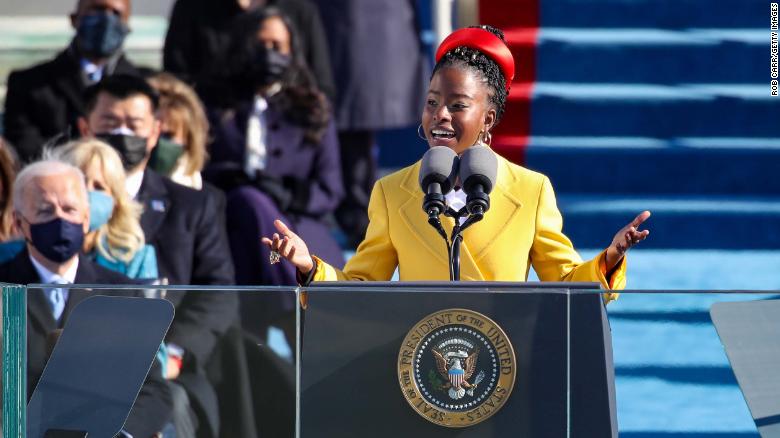
Amanda Gorman, January 20, 2021.
Amanda Gorman
When day comes we ask ourselves, where can we find light in this never-ending shade? The loss we carry, a sea we must wade. We’ve braved the belly of the beast. We’ve learned that quiet isn’t always peace. In the norms and notions of what just is isn’t always justice.
And yet, the dawn is ours before we knew it. Somehow, we do it. Somehow, we’ve weathered and witnessed a nation that isn’t broken, but simply unfinished. We, the successors of a country and a time where a skinny Black girl descended from slaves and raised by a single mother can dream of becoming president, only to find herself reciting for one.
And yes, we are far from polished, far from pristine, but that doesn’t mean we are striving to form a union that is perfect. We are striving to forge our union with purpose, to compose a country committed to all cultures, colors, characters and conditions of man.
And so, we lift our gazes not to what stands between us, but what stands before us. We close the divide because we know, to put our future first, we must first put our differences aside. We lay down our arms so we can reach out our arms to one another. We seek harm to none and harmony for all. Let the globe, if nothing else, say this is true. That even as we grieved, we grew. That even as we hurt, we hoped; that even as we tired, we tried; that we’ll forever be tied together, victorious. Not because we will never again know defeat, but because we will never again sow division.
Scripture tells us to envision that everyone shall sit under their own vine and fig tree, and no one shall make them afraid. If we’re to live up to our own time, then victory won’t lie in the blade, but in all the bridges we’ve made. That is the promise to glade, the hill we climb if only we dare it. Because being American is more than a pride we inherit; it’s the past we step into and how we repair it. We’ve seen a forest that would shatter our nation rather than share it, would destroy our country if it meant delaying democracy. And this effort very nearly succeeded.
But while democracy can be periodically delayed, it can never be permanently defeated. In this truth, in this faith we trust, for while we have our eyes on the future, history has its eyes on us. This is the era of just redemption. We feared it at its inception. We did not feel prepared to be the heirs of such a terrifying hour, but within it, we found the power to author a new chapter, to offer hope and laughter to ourselves.
So, while once we asked: “How could we possibly prevail over catastrophe?” Now we assert, “How could catastrophe possibly prevail over us?”
We will not march back to what was, but move to what shall be: a country that is bruised, but whole; benevolent, but bold; fierce and free. We will not be turned around or interrupted by intimidation, because we know our inaction and inertia will be the inheritance of the next generation. Our blunders become their burdens. But one thing is certain, if we merge mercy with might, and might with right, then love becomes our legacy, and change our children’s birthright.
So, let us leave behind a country better than one we were left. With every breath from my bronze-pounded chest, we will raise this wounded world into a wondrous one. We will rise from the gold-limned hills of the West. We will rise from the wind-swept Northeast where our forefathers first realized revolution. We will rise from the lake-rimmed cities of the Midwestern states. We will rise from the sunbaked South. We will rebuild, reconcile, and recover in every known nook of our nation, in every corner called our country our people diverse and beautiful will emerge battered and beautiful.
When day comes, we step out of the shade aflame and unafraid. The new dawn blooms as we free it. For there is always light. If only we’re brave enough to see it. If only we’re brave enough to be it.
